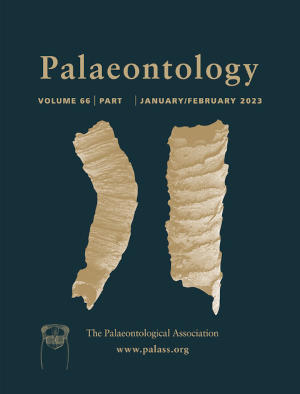Article: A new method for extracting conodonts and radiolarians from chert with NaOH solution
Publication: Palaeontology
Volume:
66
Part:
4
Publication Date:
2023
Article number:
e12672
Author(s):
Manuel Rigo, Tetsuji Onoue, Qiangwang Wu, Yuki Tomimatsu, Lisa Santello, Yixing Du, Xin Jin, and Angela Bertinelli
Abstract
Abstract Microfossils are important components of sedimentary rocks used for palaeontological, biostratigraphic, palaeoenvironmental and palaeoclimatic investigations. They are usually extracted from rocks using an acid solution, which might vary depending on the embedding rock lithology. Here we propose a new method using common NaOH (sodium hydroxide; soda) to digest cherts (micro- and cryptocrystalline quartz) instead of the standard technique based on HF (hydrofluoric acid). This new method allows the collection of undamaged specimens of different kinds of microfossils, such as conodonts, radiolarians, teeth and dermal scales, the minerology of which is still preserved (e.g. biogenic apatite in conodonts). The use of soda is thus recommended, as it is less dangerous, less expensive, and it better preserves the extracted microfossils both in shape and mineralogy.
